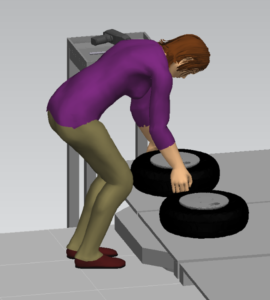Volume 5 | September 2022
QUARTERLY REVIEW
Human-Centered. Solutions Driven.
Your Project Management Resourcing Strategy
By Sandalwood Team

In a rapidly changing global economy some common concerns are arising. These include:
- Increased commodity prices
- Available supply vs. Consumer demand
- Limited access to technical resources
While there is no solving the world’s inflationary problems (or for that matter, influence the laws of Supply and Demand), there are some very interesting solutions to the lack of technical resources.
First Question
When experiencing a technical worker shortage, we begin with this simple question:
Have you thought about different ways to organize your work?
Core Problems
This question can be very challenging for many companies, who are often only comfortable utilizing existing job descriptions or established work practices. This is particularly true for technical professions (i.e., Engineering, Programming, etc.), where managers often default to a “Plug-and-Play” mentality when assigning or replacing resources.
In a tight labor market (such as the one we are experiencing today), trying to find a “plug-and-play” resource can be frustrating, and honestly, quite impossible. As a result, we are seeing multiple instances of delayed programs, halted investments, and even shuttered production due to lack of technical resources.
Something has to change! Is it possible to look at dividing work differently?!?!
Why should we organize our work differently?
Let’s begin with the traditional Product Development Process:
- Incorporate Customer Requirements into a Technical Specification
- Design a Product and/or Service to meet (or exceed) the Technical Specification
- Test the Product and/or Service to ensure that the Technical Specification was met
- Support the launch of the Product/Service into the Market
- Monitor the quality of the in-market Product/Service
- Iterate the design of the Product/Service to improve quality and/or reduce costs

In most cases, supplementing and/or replacing the technical aspects of the project is not the issue. Rather, the source of the problem lies in several areas:
- Consistency of documentation and/or loss of information throughout the process
- Coordination and alignment of resources across multiple functions and countries
Previously, this problem was solved in the most straightforward method: Hire more Engineers! However, given the lack of available, technical resources, this solution is no longer a possibility.
A Change of Mindset
New Solution: Organize the work (differently)! Review the work performed by an engineer, and place the work into two distinct “buckets”:
- Technically-driven (e.g. drawings, specifications, testing results, analysis, etc.)
- Process-driven (e.g. Planning, Time/Issue/Problem/Change Management, Risk Assessments, etc.)
Following that review, assign the technical work to an Engineer and the process work to the Project Manager. The Engineer and the Project Manager work together, as a team, toward a common goal.
Benefits
This type of work arrangement has been beneficial for many reasons:
- A Project Manager can immediately relieve work from an overburdened technical resource
- A Project Manager can improve the alignment and coordination of disparate and/or remote resources
- A Project Manager can be developed and deployed much faster than a “Plug-and-Play” technical resource
- A Project Manager can allow scarce technical resources to be shared between multiple programs and projects
What other new solutions are waiting, we wonder?






 Why Sandalwood?
Why Sandalwood?


 We are a one-stop-shop for launching job rotation for any employer from conception to implementation. Our experts tailor our services to meet the needs of our customers by collaborating with them throughout the entire process. We do not offer cookie cutter solutions for job rotation because the needs of employers vary significantly.
We are a one-stop-shop for launching job rotation for any employer from conception to implementation. Our experts tailor our services to meet the needs of our customers by collaborating with them throughout the entire process. We do not offer cookie cutter solutions for job rotation because the needs of employers vary significantly. Why Sandalwood?
Why Sandalwood?



 Sandalwood is pleased to offer solutions above and beyond the traditional ergonomic assessments. With an in-depth knowledge of various digital human modelling software suites, integration and adoption to your health and safety programs has never been easier. Sandalwood is experienced in ergonomic program design as well as industry leaders in digital human modelling services. We have a diverse team that is able the leverage the results from the digital human model to provide in depth risk assessments of future designs and current state. Sandalwood is also able to pair these assessments with expertise and provide guidance on the best solution for you. Sandalwood is also on the forefront of emerging technologies and able to integrate Motion capture, Wearables, and extended or virtual reality into your ergonomic program.
Sandalwood is pleased to offer solutions above and beyond the traditional ergonomic assessments. With an in-depth knowledge of various digital human modelling software suites, integration and adoption to your health and safety programs has never been easier. Sandalwood is experienced in ergonomic program design as well as industry leaders in digital human modelling services. We have a diverse team that is able the leverage the results from the digital human model to provide in depth risk assessments of future designs and current state. Sandalwood is also able to pair these assessments with expertise and provide guidance on the best solution for you. Sandalwood is also on the forefront of emerging technologies and able to integrate Motion capture, Wearables, and extended or virtual reality into your ergonomic program.



